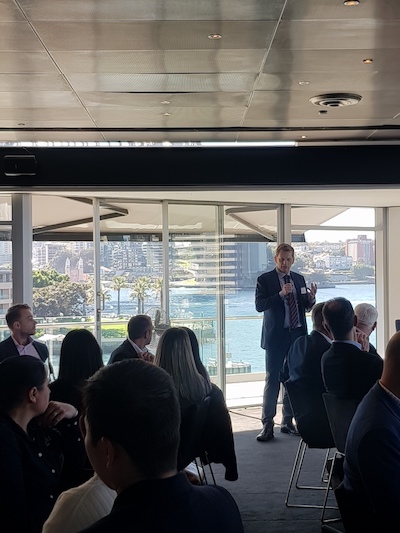Ross Lambie delivers his fiscal outlook for 2021/22
CreditorWatch recently hosted a series of fascinating events around the country, at which senior leaders were privileged to hear from some of the nation’s most astute economists and strategists. In this blog, we unpack Australian Chamber of Commerce and Industry chief economist Ross Lambie’s view of the fiscal outlook.
On a sparkling Sydney day with gun barrel views across to the Sydney Opera House and beyond, a room of senior executives were treated to the insights of one of Australia’s most senior and insightful economists, ACCI’s Ross Lambie.
Lambie’s address explored the rationale behind the recent federal budget, which he said was the first phase of the federal government’s current fiscal and economic strategy.
“It’s all about jobs. This year’s budget is about trying to reduce the amount of ‘scarring’, as the government calls it, on the economy longer term, from having a higher level of unemployment than we need.”
He explained much of the spending outlined in the budget is to help support productivity longer term with infrastructure spending, combined with some tax relief.
“The upshot is we’ve got deficits running out as far as the eye can see, well past the end of this decade. So without essential service spending, there’s some real structural issues within the budget. We need to find ways of getting more revenue.
Although it’s not reflected in the budget papers, the government needs the economy to grow to deal with the fiscal deficit and pay down the large amount of debt that’s accumulated.”
The national net debt is forecast to rise to about $960 billion or just over 40 per cent of GDP by the 2024/2025 financial year.
Key points to watch
Lambie identified a number of economic data points to watch, the first being economic growth.
“The budget forecasts real GDP growth to get back to about 2.5 per cent annually, which is about what we’re used to over the longer term. But the government is not going to be able to pay back debt and repair the deficit with 2.5 per cent economic growth. It’s got to be substantially higher.”
He explained household spending and consumption will be a strong driver of growth in the coming years. “We shouldn’t lose sight of the fact $291 billion worth of fiscal support and tax relief has boosted household and business balance sheets. That money needs to come back into the economy and be spent because that spending has to take over from government support of the market.”
Business investment is another watch point, said Lambie.
“We’re seeing business investment of around 10 per cent of growth, which is enormous compared to what it usually is. Non-mining business investment, which has been the real struggle for the economy, is forecast to be 12.5 per cent of GDP.” Tax incentives are helping to drive these numbers.
Unemployment, however, is how the government really determines its success.
“The good news from the budget is fiscal policy is supporting monetary policy. The idea is to remove slack from the labour market to keep unemployment as low as possible and get real wages growth coming through to the economy, which gives people more money in their pockets and drives demand. But we still have a problem until we resolve underemployment, another factor in removing slack in the labour market.”
Lambie said monetary policy keeps him up at night
“We’ve got very accommodative monetary policy around the world. That has spawned risk-taking behaviours, and I wonder whether people appreciate that risk. We’ve had a major change in people’s perceptions of asset prices, where they allocate capital and how they embrace risk. We’ll see whether those decisions have been well founded. Quantitative easing is also a large experiment and nobody knows how this all unfolds as we’ve never used it before.”
Lambie noted QE had positive effects in the financial crisis of 2007/2008, but there are questions about how current unconventional approaches to monetary policy are unwound.The impact of supply chain dislocations, skills shortages and geopolitics on local and global economies are also unknowns.
“We’re going to come out of this pandemic with an economy that is structurally different to the one we went into it with. Overriding all of that is some really big themes that were there before the pandemic such as technological changes that have accelerated over the last 18 months.
That’s not going to go away. We also have big environmental challenges and an aging population. What’s dementia going to do in terms of workforce participation because it’s not only people you’re taking out of the economy in terms of those who are directly affected, it’s those that have to care for them have to be taken out of the economy too?”
It was a wide-ranging overview of the economy, with lots of food for thought. It will be fascinating to see how the trends Lambie touched on play out in the near term and in the future.





